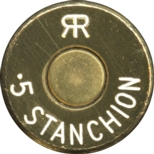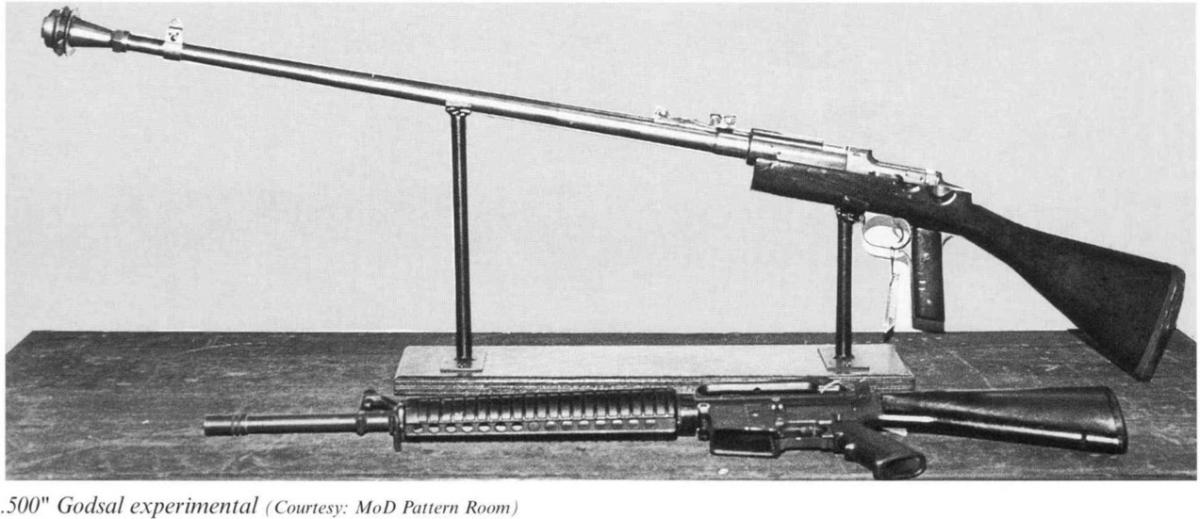

The British did not start developing an effective infantry anti-tank weapon until late in the War of 1914 – 1918, as they were basically the only country that fielded tanks during the War so there was no immediate urgency for such a rifle. The Germans possessed very few at this late stage of the War and some of them were captured Allied tanks.

The rifle developed by Britain in 1918 was the Godsal which was manufactured by Webley & Scott and the original calibre was the .600/.500 cartridge, which was a belted version of an earlier rimmed design which used an extended .600 Nitro Express case. It was originally developed early during 1918 as it had become clear by then that the .45 inch converted Maxim guns were far from ideal as future air service weapons. Advances were being made in the .5 inch caliber development and the .600/500 was therefore briefly considered as an anti-tank weapon option. By the end of the war however all interest in anti-tank weapons faded along with the budgets. It was only during the early 1930’s that research started again into what would become the .55 Boys Anti-tank Rifle. The British Small Arms Committee was instructed in October 1934 to investigate the possibility of developing a shoulder fired anti-tank weapon with a maximum weight of 35 pounds that would be able to defeat 14mm armor plate at 500 yards and 25mm at 200 yards on normal angles of attack. A captured German 13mm anti-tank rifle was modified to reduce recoil and the design used as a platform for the Stanchion rifle as it was referred to in documentation from March 1935 onward to preserve the secrecy of the project.
The first Stanchion rifles were test fired during July 1935 and had an 800gr. bullet at a muzzle velocity of 2,540 fps and was loaded with cordite. The cartridge was a belted case design and closely resembled the 50 Browning. Full testing was done during September 1935 and it was decided that the caliber should be reviewed. It was during December 1935 that the decision was made to change the name of the cartridge in honour of Capt. Boys of the Design department and in early 1936 the caliber was changed from .50 inch to .55 inch with the rest of the case remaining virtually unchanged.
